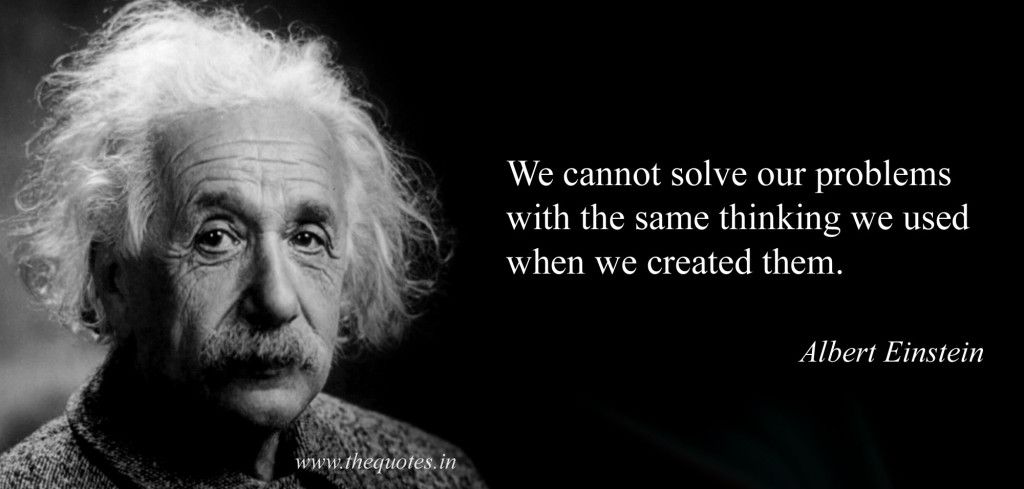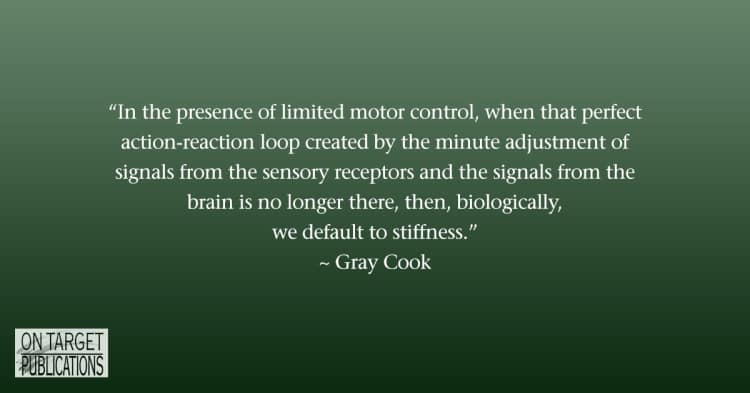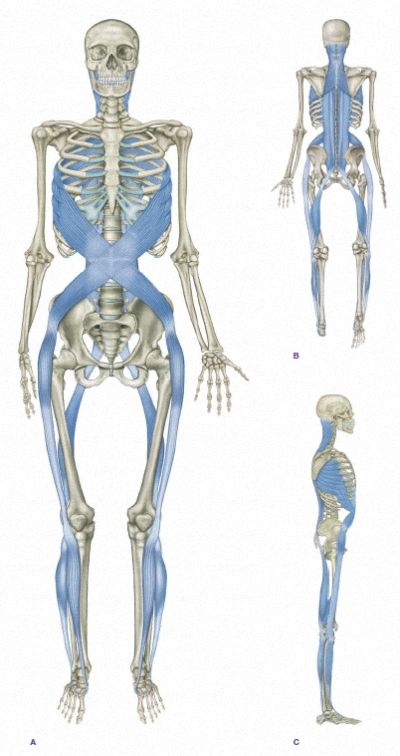Smart Mobility Training For Better Hips & Shoulders
2020-08-21
One of the hardest things to help people understand better training is that the solution doesn’t always look like the problem. Mobility training is such a great example of this being the case because when people feel their shoulders or hips are limited in their mobility they think somewhat logically, “I gotta focus on my hips and shoulders.” However, so many times, in order to really make a difference in a problem we have to ask the right questions and there may be no better example than in mobility training.

Why is mobility training such a great platform to discuss understanding functional movement? The truth is that we tend to want to bodybuild a problem that is typically much more neurological. For example, have you ever stretched a muscle, had it feeling pretty good, and after a few minutes or even later in the day the same muscle feels tight again. Why is that? You stretched it so why does it become “tight” once again?
Our bodies are smart and it does things that we are totally unaware of in order to protect itself and have it function as safely as it perceives to be possible. When our body isn’t working right the nervous system identifies this issue and goes “WHOA! I better do something to make sure I don’t get hurt because our system isn’t working as it should.” That’s why our body isn’t a machine. If you had a nail in your tire your car lets you drive it until the tire literally falls apart. However, our nervous system uses strategies to try to ensure you don’t do that (not saying people don’t override that and do drive their bodies into the ground, but that is a different issue).

I don’t think it is possible to describe the issue as well as renowned physical therapist, Gray Cook, does above. People don’t like these types of ideas because they don’t automatically make sense. Imagine trying to explain to someone that their “tight” shoulder isn’t from their shoulder?! They are going to look at you sideways unless you can easily explain to them why that would be the case. After all, how many clients, or even fitness professionals for that matter, understand what motor control means?
If you don’t, don’t feel bad, there are a lot of really smart people that tend to overlook this important concept. The easiest way to describe motor control is that every movement your body performs is based on a sequence that your nervous system decides to use before you even start moving. That means your body strategically decides to use certain muscles at a certain time in which a movement is created. If that system has bugs in it and doesn’t create an efficient movement, then we start to default to a bad motor pattern that causes our body to go on the defense and that usually means tightness. We can change this faulty default pattern if we use smarter training as our nervous system can be easily reprogrammed through proper movement.
Whew, a lot right? Don’t worry though, I am going to make this very practical for you, but it explains why a tight shoulder may only be a response to issues in the core, opposite hip, even the foot! That wouldn’t make much sense unless you understood these concepts and how the body is designed to function.

Concepts like the spiral line of the body show how these muscles are connected to where a shoulder can impact a hip and vice versa, or how the core is so important to both the shoulders and hips.
https://www.instagram.com/p/CClzMXVA-bs/
What drills like strength coach, Martin Adame, shows wouldn’t make much sense to the average person in improving mobility training in both the hips and shoulders, but it combines what research shows to be most important. That is a dynamic movement that puts muscles at stretch and core stability through tension and load of the Ultimate Sandbag. As studies like this one (you can check out HERE) states, “These results indicate that changes in passive ROM or core endurance do not automatically transfer to changes in functional movement patterns. This implies that training and rehabilitation programs may benefit from an additional focus on ‘grooving’ new motor patterns if the newfound movement range is to be used.”
The researchers point to a few important concepts. One, mobility training and flexibility are different. Me having the ability to control my body through space (mobility training) is more important than the ability to have someone take my body through a range of motion (flexibility). They also share that if I want that mobility training to actually transfer to functional movements I have to actually perform movements that reflect those similar patterns. Meaning, just cranking on your shoulder and/or hip doesn’t usually result in your body learning to control that joint in a more integrated manner.
Since we are talking a lot about neurology (which can be abstract for some to really grasp, but man neurology trounces everything muscular!), that means the details we have in the drill are SO important. As Martin describes, he found himself making a VERY common mistake in what can be a powerful mobility training exercise. If you make this mistake you often won’t find the “magic” in your mobility training that we want to help you achieve.
https://www.instagram.com/p/CD2cWAxgogV/
Does that mean you always have to be perfect in your mobility training? Not exactly. If you are new to these mobility training movements and training ideas, then doing better will definitely give you an improvement in movement. The more trained you become in these drills the more important the details become in keeping you moving in a positive direction with your mobility training.
Understanding these concepts isn’t just a matter of giving you something new to add in your mobility training. We forget that so many people find their quality of life decreases the more their movement becomes limited. The older we become the more profound this becomes in our daily lives as Martin shows with his Dad. You can see that just tying his shoes becomes a challenge but with some good cuing and direction to mobility training the improvements are immediate. Of course, this will need to be cemented over time, but there are two important things to notice.
- You don’t need to be perfect, especially initially. However, you do have to be purposeful in what you are teaching and doing.
- Giving people a positive result and a feeling of success will always inspire the desire to work more on things that may not naturally feel good or easy. We need to make exercise and physical activity have wins early for people to keep going down that positive road!
When you understand what good mobility training is all about it means we can help more people and that is what we are all about in the first place!

Want to learn more about how to make such a positive impact on people’s lives? We have a 48-hour sale on our DVRT Online Education HERE and our Ultimate Sandbags and DVRT Workout programs HERE with code “august30” (good till Monday). When you invest in any of our Ultimate Sandbags you will get our NEW Beginner and Warm-up programs for FREE! We want you to feel that success and DVRT difference. Don’t wait, go HERE for a VERY limited time!
https://www.instagram.com/p/CDtn4DtA5XX/
© 2025 Ultimate Sandbag Training. Site by Jennifer Web Design.






